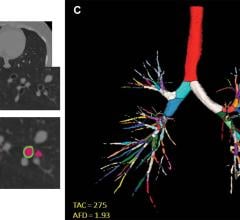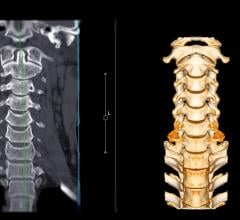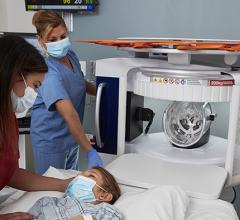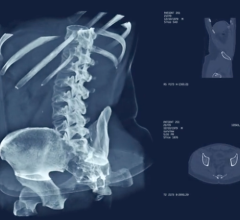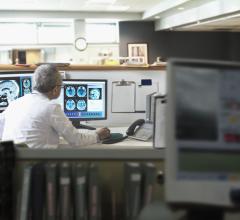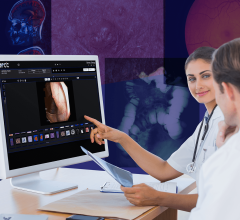
Greg Freiherr has reported on developments in radiology since 1983. He runs the consulting service, The Freiherr Group.
BLOG: Artificial Intelligence May Help Enterprise Imaging

The latest version of the universal viewer shown by GE Healthcare at RSNA 2019 incorporates artificial intelligence. Image courtesy of GE Healthcare
After languishing for years,enterprise imagingappears ready to enter the mainstream of health care. At least a small part of that may involve the use ofartificial intelligence(AI) to make the transmission, storage, display and analysis of the many different types of images easier and more efficient.
AtRSNA 2019,GE Healthcareaddressed the crossover of AI and enterprise imaging with the latest version of its AI-enabledCentricity Universal Viewer.
Version 7 “consumes” and displays AI findings revealed by the Centricity PACS, saidVeena Haravu, Senior Product Manager for Centricity PACS at GE Healthcare. This Version 7, which is pending FDA clearance, is integrated with the company’sEdison Open AI Orchestratorto display the results of smart algorithms embedded in it.
Centricity PACScustomers planning to take advantage of the AI being built into Orchestrator (which runs on Centricity PACS) should go with Version 7, Haravu toldITNfrom the GE Healthcare booth at RSNA 2019.
“The GE (Healthcare Centricity Universal) Viewer is an enterprise viewer in use today with many of our customers worldwide,” she said. “So (V7) is not a new application — or a new widget or a new pop-up for you to work with. (Rather) it is woven into (Centricity Universal Viewer’s) existing reading and reporting workflow so you don’t have to spend a lot of time clicking and accessing other applications.”
Making The Future More Efficient
Compatibility with AI algorithms being built into the Orchestrator may be a compelling reason to purchase the latest version of this Viewer. But it is not the only one. Even more compelling may be customers’ need to operate more efficiently in enterprise imaging.
“If you want a cross-enterprise capability that is much enhanced from what it is now — like automatic hanging access of remote comparisons and advanced image placement utilities to make your reading/reporting workflow much more efficient – then V7,” Haravu said. “Version 7 takes what V6 has and enhances it further, giving you (access to) an AI platform.”
Universal viewers have long played an indispensable role in enterprise imaging. These viewers display radiological and optical images as well as charts, graphs and text. Similar to them in operation, the GE Healthcare Universal Viewer is web-based and creates no footprint; its computing is done on Centricity PACS.
Version 7 adds artificial intelligence to the mix by enabling the Universal Viewer to work with the company’s Edison Open AI Orchestrator. Version 7 will work with all the AI algorithms embedded in the Orchestrator, Haravu said. Customers can “have a more seamless workflow,” she said.
Reducing Strain on Radiologists
AI and, by extension, the AI-enabled version of GE Healthcare’s Universal Viewer promise to relieve some of the strain responsible for radiologist burnout.
“Burnout is getting a lot of attention,” saidStuart Pomerantz, M.D., a neuroradiologist and researcher at the Center for Clinical Data Science at MassachusettsGeneral HospitalandBrigham and Women’s Hospital.
Burnout is a concern for radiology professionals, according to the American College of Radiology.
Version 7 of the Universal Viewer enables the future, while emphasizing ease of use.
Editor’s note:This is the final blog in a series of four blogs about how artificial intelligence might increase both efficiency and effectiveness, thereby, decreasing stress. The first blog,How Burnout Puts Radiology at Risk, can be foundhere. The second blog,How AI Could Make Radiologists’ Jobs Less Stressful, can be foundhere. The third blog,BLOG: How AI Might Boost Efficiency and Effectiveness, can be foundhere.
Related content:
BLOG: How AI Might Boost Efficiency and Effectiveness
BLOG: How AI Could Make Radiologists’ Jobs Less Stressful
BLOG: How Burnout Puts Radiology at Risk
Centricity Universal Viewer: Embrace the Power of One Intelligent Diagnostic Viewer


 August 09, 2022
August 09, 2022
